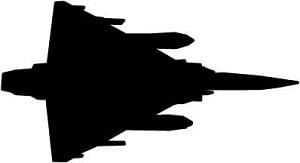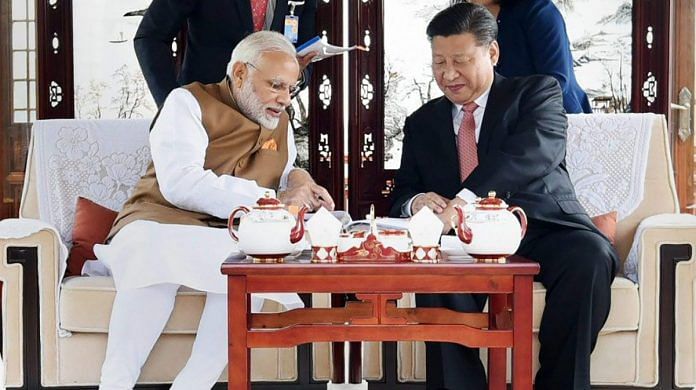Until bold steps are taken in resolving the border dispute, it will continue to be Move, Counter, Reset, Restart.
Having discussed the various compulsions that may have led to the Wuhan Dialogue between Prime Minister Narendra Modi and President Xi Jinping, it is time to shift focus to the expected outcomes of the visit.
As one absorbs the predominant flavour of hope and expectation that emerges from those within India’s strategic community who believe that ‘recalibration’, ‘reset’, and ‘de-escalation’ will emerge as possible outcomes, history shows that the two dominant positions that China has taken vis-à-vis India over the last five decades have been to either ‘teach India a lesson’, or ‘manage India’. The 1962 war, Nathu La, Sumdorong Chu, Depsang, Chumar, and Doklam are all attempts that reflect the former, while Deng Xiaoping’s outreach to Rajiv Gandhi in 1988, and the Border Peace and Tranquility Agreement of 1993, reflect the latter.
Beyond speculation that Deng may have offered a ‘sectoral swap agreement’ that Rajiv declined, there is little to suggest that any Chinese or Indian leaders since have broached the issue and laid their cards on the table. As a leading power with a grossly unbridgeable lead in terms of comprehensive national power vis-à-vis India, China seemingly ought to have the strategic confidence to lay its cards on the table, particularly with regards to the border dispute with India. India as a ‘leading power’ in the making also ought to be able to deal with that proposition, and nationally debate the issue with maturity as to how far it could go to accommodate Beijing’s position.
I recollect remarking to a Chinese participant at a seminar a few days prior to the meeting that President Xi and PM Modi have an opportunity to bag the Nobel Peace Prize should they display statesmanship and vision, with the onus clearly on Xi to lead the way as a senior partner. The response I got initially was one of surprise; then, there was a quick recovery, and a suggestion that ‘managing’ issues in today’s uncertain strategic milieu may be of greater priority at present. Consequently, despite its optics and hype, the Wuhan meeting was a conservative and cautious summit with only ‘low hanging fruit’ on the table.
China experts in the US like Prof. Roderick MacFarquhar have speculated that it could have been India which made the initial approach and China played along. The reality may be different, and the perception of the US that China is hardly concerned about India beyond its growing strategic partnership with the US, is rather simplistic.
These experts argue that India hardly figures in any Chinese discourse when US diplomats and scholars engage with their Chinese counterparts. This, I suggest, is part of a carefully calibrated ‘high table’ strategy and focusses on bridging China’s power differential with the US, which then takes care of all other strategic challenges, India being rather high on the list after Taiwan and Japan. Does this reset amount to any course correction in the Indo-US strategic partnership? I would reckon not, as much common ground has been identified, and significant trust generated, over the last few years.
What then of the low hanging fruit? Setting up of a military hotline between New Delhi and Beijing, trade and collaborative possibilities in Afghanistan, putting aside differences over India’s resistance to the Belt and Road Initiative, and bridging the trade deficit are all initiatives that fall within the realm of possibility, many of which have been attempted in the past. Of these, the most contentious is the burgeoning trade deficit, which seems insurmountable. The lack of enthusiasm from domestic industry and business leaders after Wuhan reflects the ground reality that has seen Indian businesses struggle to make a mark in China.
Indian exports have hardly made a dent in the Chinese market, nor have Indian investments in the financial or services sectors moved at the pace at which Jack Ma and Alibaba have made a splash in India. India’s investments in Afghanistan are already intensive in areas related to infrastructure and capacity building. Building a few more roads, power plants, mini-hydro projects, or setting up hospitals does not amount to any major convergence. Aamir Khan and the feel-good factor about Indian films in China does not point at any great understanding of Indian culture beyond the fact that good story-telling now has global appeal. It was not very long ago that Crouching Tiger, Hidden Dragon drew huge crowds in Indian cinema halls.
In the matrix of adversarial, competitive, collaborative, cooperative, and partnership models, PM Modi and Indian diplomacy have done well to reduce the adversarial component of the relationship. Expecting, however, to move to a collaborative and cooperative framework may prove to be a bridge too far, unless some bold steps are taken in resolving the border dispute, which is dominated by larger issues of emotive nationalism and historical baggage. Till then, it will continue to be Move, Counter, Reset, Restart. Not doing much in the India-China relationship, may, after all, be the best bet in contemporary times.
 Arjun Subramaniam is a retired Air Vice Marshal of the IAF, and currently, a visiting fellow at Oxford.
Arjun Subramaniam is a retired Air Vice Marshal of the IAF, and currently, a visiting fellow at Oxford.



